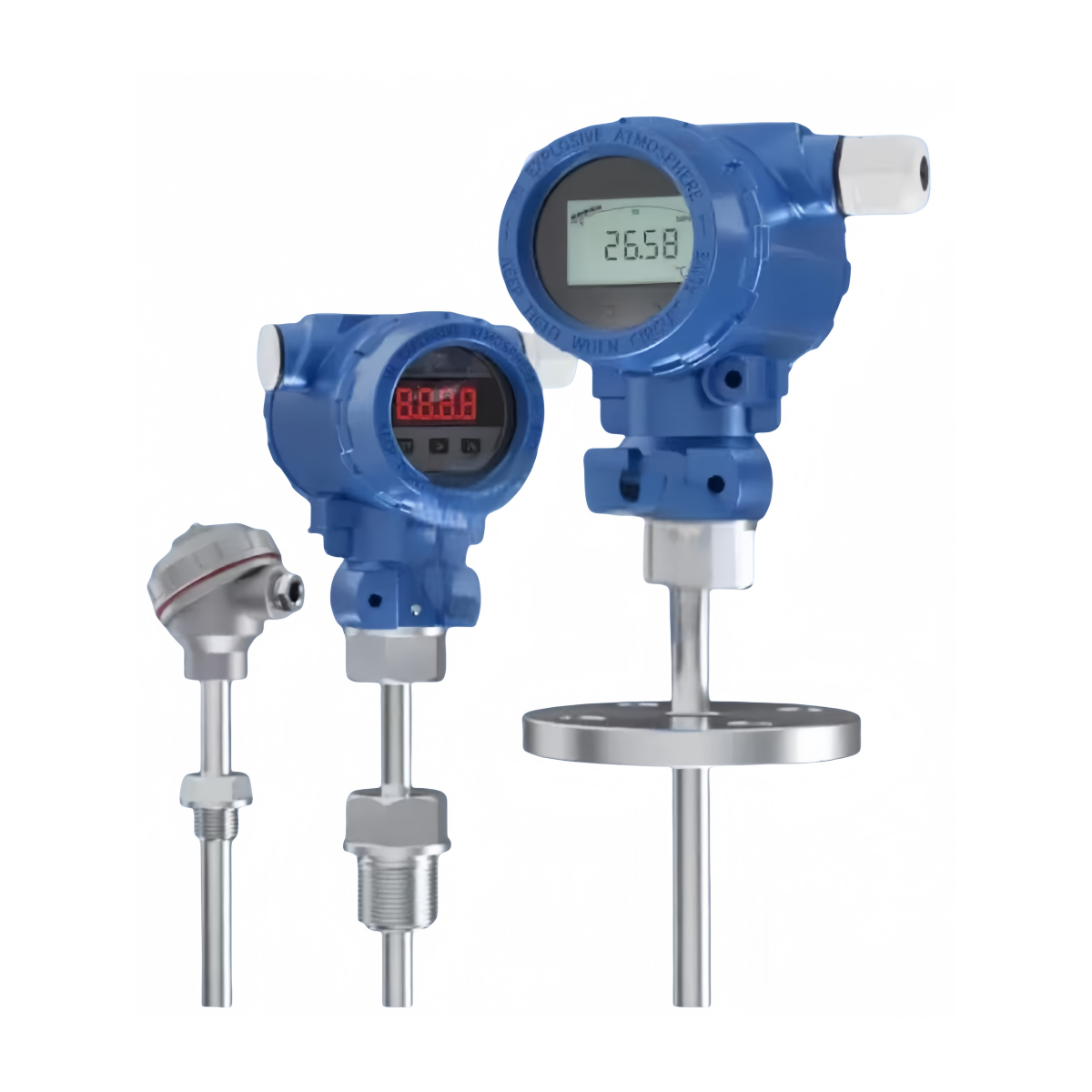Overview
A temperature transmitter converts a signal from a temperature sensor ( thermocouple or RTD) into 4-20 mA or digital signal for interfacing into other control equipment.
Features
- Signal Output: 4-20 mA, 0-10 V, or digital signals (like Modbus or HART).
- Accuracy: High accuracy is critical for many industrial applications.
- Range: They can operate over various temperature ranges depending on the sensor type.
- Protection: Many are housed in rugged enclosures for protection against environmental factors.
Specifications
- Sensor type: thermocouple, thermal resistance
- Graduation number and Temperature measurement range:
- N (0~1000℃) Nickel-chromium-silicon-nickel-silicon
- K (0~1000℃) Nickel-Chromium-Nickel-Silicon
- E (0~800℃) Nickel-Chromium-Copper-Nickel
- T (0~350℃)Copper-Copper Nickel
- J ( 0~600℃) Iron-Copper-Nickel
- Pt100 ( A: -30~300°C B: -50~500℃)
3.Connection: fixing thread, movable flange, fixed flange, flexible pipe joint
4.Protection tube diameter: Ф16, Φ20
5.Display: No display, LED display, LCD display
6.Output: 4~20mA
7. Accuracy: 0.5%, 0.2%
8.Threaded connection:M20×1.5, customizable G1/2 M27×2, etc.
9.Insert deep: Default 50mm, customizable
10.Ambient temperature:-25~85℃(Digital display head is 0~60℃)


Reviews
There are no reviews yet.